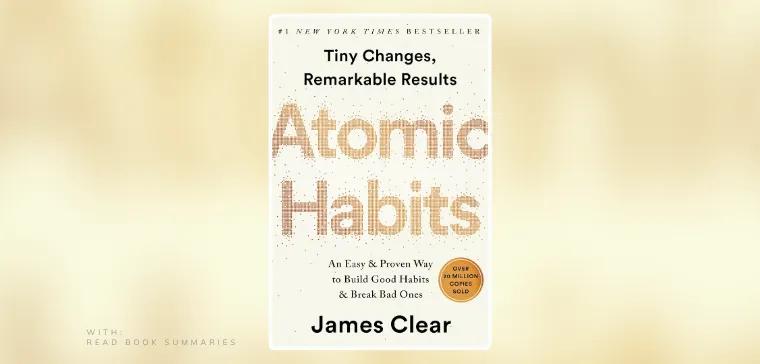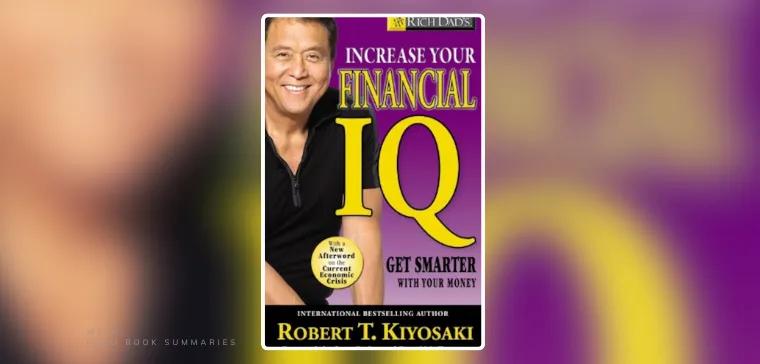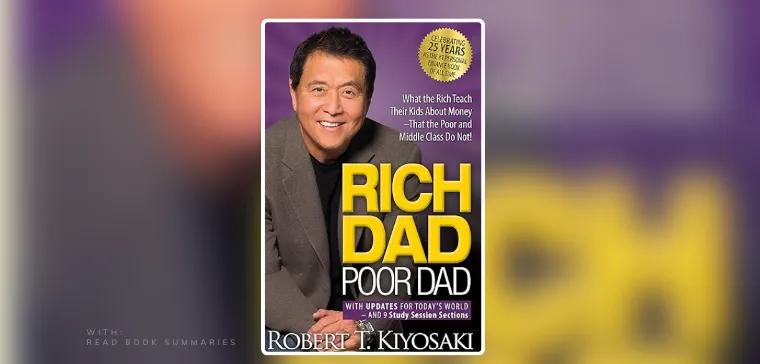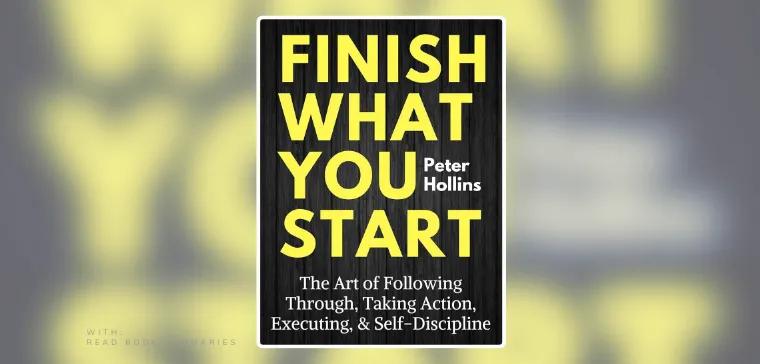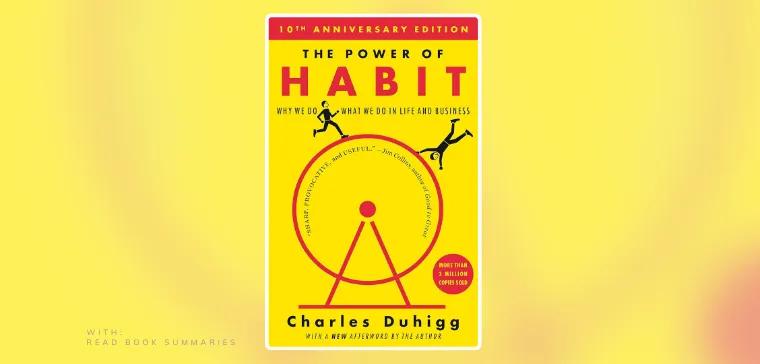

Unleashing the Power of Habit: Transform Your Life with Charles Duhigg
What if the secret to changing your life is simply understanding the habits that shape it?
In "The Power of Habit" by Charles Duhigg, this insightful book delves into the science of why habits exist and how they can be altered. With its engaging insights and practical tips, Duhigg's work is essential for anyone wanting to harness the power of habits for personal and professional improvement.
"The difference between who you are and who you want to be is what you do."
By exploring this summary, you'll discover the secrets of habit formation and learn how to reprogram your routines for success.
Learn how a small change in routine can lead to significant transformations, from personal achievements to organizational success.
Ready to unlock your habits' potential? Continue reading to explore fascinating insights from Duhigg's bestseller and start your journey towards a more intentional life.
Prologue: The Habit Cure

In the prologue of "The Power of Habit," Charles Duhigg introduces the transformative power of habits through Lisa Allen's story, a woman who drastically changed her life by altering her habits. Lisa's journey begins with a personal crisis—her husband leaves her for another woman, prompting her to take a spontaneous trip to Cairo. This trip becomes a turning point, as she decides to quit smoking to prepare for a trek across the desert. This decision triggers a chain reaction of positive changes in her life.
The concept of the "habit loop" is key to understanding Lisa's transformation. Duhigg explains that habits consist of a cue, a routine, and a reward. For Lisa, the cue was her desire to change, the routine was replacing smoking with jogging, and the reward was a healthier lifestyle. This simple loop helped her not only quit smoking but also lose weight, run marathons, and improve her career and personal life.
Duhigg uses Lisa's story to show that habits can be reshaped. He emphasizes that while habits are powerful, they are not destiny. By focusing on changing one "keystone habit," like smoking, individuals can trigger widespread changes in other areas of their lives. This concept is also applicable to organizations and societies.
The prologue sets the stage for the rest of the book by highlighting the potential for change inherent in understanding and manipulating habits. Duhigg suggests that by identifying and altering the components of our habit loops, we can control our behaviors and achieve significant personal and professional growth. This engaging introduction encourages readers to explore the subsequent chapters to learn more about the science of habits and how to apply these insights to their lives.
Chapter 1: The Habit Loop - How Habits Work

In Chapter 1 of "The Power of Habit," Charles Duhigg introduces the concept of the habit loop, a neurological pattern that governs any habit. This loop consists of three components: a cue, a routine, and a reward. Understanding this loop is crucial for changing habits, as it reveals how habits form and how they can be changed.
Main Idea 1: The Structure of the Habit Loop Duhigg explains that every habit starts with a cue, a trigger that tells your brain to go into automatic mode and which habit to use. For example, the sound of an alarm clock might be a cue to start your morning routine. The routine is the behavior itself, such as brushing your teeth or making coffee. Finally, the reward is what you gain from the habit, like the feeling of freshness after brushing your teeth or the caffeine boost from coffee. This reward helps your brain decide if this particular loop is worth remembering for the future.
Main Idea 2: The Power of Habits Duhigg illustrates the power of habits through the story of Eugene, a man who lost his memory but could still perform daily routines due to his ingrained habits. This example shows that habits are deeply embedded in our brains, often operating without our conscious awareness. The basal ganglia, a part of the brain, plays a key role in storing these habits, allowing us to perform them automatically.
Main Idea 3: Changing Habits To change a habit, Duhigg suggests identifying the components of your habit loop. For instance, if you have a habit of eating a cookie every afternoon, identify the cue (perhaps a specific time of day), the routine (going to the cafeteria), and the reward (the pleasure of eating the cookie). By experimenting with different routines and rewards, you can reshape the habit loop. For example, you might replace the cookie with a healthier snack or a short walk, satisfying the same craving for a break or a treat.
Understanding the habit loop empowers individuals to take control of their behaviors. By recognizing the cues and rewards that drive routines, anyone can begin to change their habits and improve their lives. This chapter sets the foundation for the rest of the book, encouraging readers to delve deeper into the science of habits and explore how they can apply these insights to their own lives.
Chapter 2: The Craving Brain - How to Create New Habits

In Chapter 2 of "The Power of Habit," Charles Duhigg delves into the role of cravings in habit formation and how they can be harnessed to create new habits. The chapter begins by explaining that habits are driven by cravings, which are powerful desires for the rewards that follow routines. Understanding and manipulating these cravings is key to developing new habits.
Main Idea 1: The Role of Cravings in Habits Duhigg illustrates the concept of cravings through the story of Julio, a monkey trained to perform tasks in exchange for a reward. Initially, Julio's brain activity spiked only when he received the reward, but over time, his brain began to anticipate the reward as soon as he saw the cue. This anticipation is the craving, which drives the habit loop. For example, when someone craves the endorphin rush from exercise, they are more likely to make working out a habit. This craving for the reward is what makes habits stick.
Main Idea 2: Creating New Habits with Cravings To create a new habit, Duhigg suggests identifying a simple cue and a clear reward, then cultivating a craving for that reward. For instance, if you want to start running every morning, choose a cue like putting on your running shoes as soon as you wake up, and a reward such as a delicious smoothie afterward. By focusing on the craving for the smoothie or the sense of accomplishment, the habit becomes easier to establish. Duhigg also highlights how companies use this knowledge to their advantage. For example, toothpaste brands add tingling sensations to their products, creating a craving for the feeling of a clean mouth, which encourages regular brushing.
Main Idea 3: The Power of Anticipation The chapter emphasizes that the anticipation of the reward is what fuels the craving. This anticipation can be so strong that it overrides other desires, much like how Julio the monkey ignored distractions to focus on his task. In humans, this is seen in how people might crave the distraction of checking emails when they hear a notification sound, even if they are in the middle of a meeting. By understanding and leveraging this anticipation, individuals can reshape their habits to align with their goals.
In conclusion, Chapter 2 provides a framework for creating new habits by focusing on the cravings that drive them. By identifying cues, establishing rewards, and cultivating cravings, anyone can develop new, positive habits. This insight sets the stage for further exploration of habit formation in the subsequent chapters, encouraging readers to continue their journey of understanding and mastering their habits.
Chapter 3: The Golden Rule of Habit Change - Why Transformation Occurs

In Chapter 3 of "The Power of Habit," Charles Duhigg introduces the Golden Rule of habit change, which is a powerful strategy for transforming habits. This rule suggests that while you cannot completely eliminate a bad habit, you can change it by keeping the same cue and reward but altering the routine.
Main Idea 1: The Golden Rule of Habit Change Duhigg explains that habits consist of a cue, a routine, and a reward. The Golden Rule focuses on changing the routine while keeping the cue and reward the same. For example, if someone wants to stop smoking, they might identify that the cue is stress and the reward is relaxation. Instead of smoking, they could replace the routine with deep breathing exercises or a short walk, which provides the same reward of relaxation. This approach is effective because it leverages the existing structure of the habit loop, making it easier to adopt new behaviors.
Main Idea 2: Real-Life Applications and Success Stories Duhigg illustrates the Golden Rule with real-life examples, such as the success of Alcoholics Anonymous (AA). AA helps individuals replace the routine of drinking with attending meetings and sharing experiences, while the cue (stress or social pressure) and the reward (emotional relief) remain the same. This substitution helps members maintain sobriety by providing a new routine that satisfies the same cravings. Another example is Tony Dungy, a football coach who transformed his team by changing their routines on the field. By focusing on automatic responses to familiar cues, Dungy helped his players perform better under pressure, leading to significant improvements in their performance.
Main Idea 3: The Importance of Belief in Habit Change The chapter also emphasizes the role of belief in successful habit change. Duhigg argues that for the Golden Rule to work, individuals must believe that change is possible. This belief often comes from a supportive community or group, such as AA or a sports team, which reinforces the new routine and provides encouragement. Without belief, even the best strategies for habit change can falter.
In conclusion, Chapter 3 provides a practical framework for transforming habits by focusing on changing routines while maintaining cues and rewards. By understanding and applying the Golden Rule, individuals can effectively alter their behaviors and achieve lasting change. This chapter sets the stage for further exploration of habit transformation in the book, encouraging readers to continue learning about the power of habits and how to harness them for personal growth.
Chapter 4: Keystone Habits, or The Ballad of Paul O’Neill - Which Habits Matter Most

In Chapter 4 of "The Power of Habit," Charles Duhigg explores the concept of keystone habits—those habits that can trigger widespread change across various aspects of life and organizations. The chapter is centered around the story of Paul O’Neill, who transformed Alcoa, a major aluminum company, by focusing on a single keystone habit: worker safety.
Main Idea 1: The Power of Keystone Habits Duhigg explains that keystone habits are small changes or habits that people introduce into their routines that unintentionally carry over into other aspects of their lives. These habits can start a chain reaction, influencing other behaviors and creating significant transformations. For example, O’Neill’s focus on safety at Alcoa didn’t just reduce accidents; it also improved communication, increased productivity, and boosted profits. By prioritizing safety, O’Neill encouraged employees to adopt new routines that improved overall efficiency and morale.
Main Idea 2: Real-Life Applications and Success Stories The chapter illustrates how keystone habits work through O’Neill’s leadership at Alcoa. When he became CEO, O’Neill announced that his top priority was to make Alcoa the safest company in America. This focus on safety required changes in communication and processes, which led to improvements in other areas. For instance, to report accidents quickly, employees had to communicate more effectively, which led to better teamwork and problem-solving. As a result, Alcoa’s profits soared, and the company became a model of efficiency and safety.
Main Idea 3: The Ripple Effect of Keystone Habits Duhigg emphasizes that keystone habits can have a ripple effect, leading to changes in other areas of life. For example, people who start exercising regularly often find that they also begin eating healthier, becoming more productive at work, and feeling less stressed. These habits create a framework for other positive changes, making it easier to adopt new behaviors.
In conclusion, Chapter 4 highlights the transformative power of keystone habits and their ability to drive significant change. By focusing on one key habit, individuals and organizations can create a ripple effect that leads to widespread improvements. This chapter encourages readers to identify and cultivate their own keystone habits, setting the stage for further exploration of habit transformation in the book.
Chapter 5: Starbucks and the Habit of Success - When Willpower Becomes Automatic

In Chapter 5 of "The Power of Habit," Charles Duhigg explores how Starbucks has successfully instilled the habit of willpower in its employees, transforming it into a cornerstone of the company’s success. This chapter highlights the importance of willpower as a keystone habit that can lead to success in both personal and professional life.
Main Idea 1: The Role of Willpower in Success Duhigg begins by explaining that willpower is a critical component of success, often more important than intelligence or talent. He illustrates this with a study from the University of Pennsylvania, which found that students with high levels of self-discipline outperformed their peers academically. Starbucks recognized the importance of willpower early on and incorporated it into their employee training programs. For example, employees are taught to use the LATTE method—Listen, Acknowledge, Take action, Thank, and Explain—to handle difficult customer interactions. This method helps employees maintain composure and deliver excellent customer service, even under pressure.
Main Idea 2: Training Willpower as a Habit Starbucks has developed a comprehensive training program that focuses on building willpower as a habit. Employees are given workbooks and participate in role-playing exercises to prepare for challenging situations. For instance, they practice how to respond to an angry customer or manage a busy shift. By repeatedly practicing these scenarios, employees develop automatic responses that help them stay calm and focused. This training not only improves customer service but also boosts employees’ confidence and job satisfaction.
Main Idea 3: The Broader Impact of Willpower Training The chapter also discusses how Starbucks’ focus on willpower extends beyond the workplace. Employees often find that the skills they learn at Starbucks help them in other areas of their lives, such as managing personal finances or pursuing education. This ripple effect demonstrates the power of keystone habits to drive positive change across multiple domains. Duhigg emphasizes that by cultivating willpower, individuals can achieve greater success and satisfaction in their personal and professional lives.
In conclusion, Chapter 5 highlights the transformative power of willpower as a keystone habit. By training employees to develop strong willpower, Starbucks has created a culture of excellence that benefits both the company and its employees. This chapter encourages readers to consider how they can cultivate willpower in their own lives to achieve their goals and improve their overall well-being.
Chapter 6: The Power of a Crisis - How Leaders Create Habits Through Accident and Design

In Chapter 6 of "The Power of Habit," Charles Duhigg explores how crises can serve as catalysts for change, allowing leaders to reshape organizational habits. The chapter illustrates that while crises are often seen as threats, they can also present unique opportunities for transformation.
Main Idea 1: Crises as Catalysts for Change Duhigg explains that during a crisis, the usual constraints and resistance to change are often weakened, allowing leaders to implement new habits and routines. He uses the example of the London Underground fire in 1987, which led to a complete overhaul of safety procedures. Before the fire, safety protocols were often ignored due to complacency and bureaucratic inertia. However, the crisis forced the organization to confront its flaws and adopt new, more effective safety habits. This transformation was possible because the urgency of the crisis made it easier to overcome resistance to change.
Main Idea 2: Designing New Habits in Response to Crises The chapter also highlights how leaders can deliberately use crises to design and implement new habits. Duhigg discusses how Paul O’Neill, the former CEO of Alcoa, used a crisis to focus on worker safety, which became a keystone habit that improved overall company performance. By prioritizing safety, O’Neill was able to change the company’s culture and improve communication, efficiency, and productivity. This example shows that by identifying key areas for improvement and using the momentum of a crisis, leaders can create lasting change.
Main Idea 3: The Role of Leadership in Habit Transformation Duhigg emphasizes the importance of leadership in guiding organizations through crises and habit changes. Effective leaders recognize the potential of a crisis to drive change and use it to their advantage. They communicate a clear vision and rally their teams around new goals. For instance, after the London Underground fire, leaders implemented rigorous safety training and regular drills, which became ingrained in the organization’s culture. This proactive approach ensured that the new habits were sustained long after the crisis had passed.
In conclusion, Chapter 6 demonstrates that while crises can be disruptive, they also offer opportunities for positive change. By understanding the dynamics of habit formation and leveraging the urgency of a crisis, leaders can transform their organizations and create more resilient and effective systems. This chapter encourages readers to view crises as opportunities for growth and to consider how they can apply these insights to their own lives and organizations.
Chapter 7: How Target Knows What You Want Before You Do - When Companies Predict (and Manipulate) Habits

In Chapter 7 of "The Power of Habit," Charles Duhigg explores how companies like Target use data analytics to predict and influence consumer habits. This chapter highlights the power of predictive analytics in understanding and shaping customer behavior, illustrating how businesses can anticipate needs before customers even realize them.
Main Idea 1: The Role of Data in Predicting Consumer Behavior Duhigg explains that Target collects vast amounts of data on its customers, assigning each shopper a unique "Guest ID" to track their purchases and preferences. This data includes everything from the products they buy to demographic information like age and marital status. By analyzing these patterns, Target can predict significant life events, such as pregnancies, and tailor their marketing strategies accordingly. For example, if a customer starts buying unscented lotion and vitamin supplements, Target might infer that they are expecting a baby and send them coupons for baby products. This predictive capability allows Target to engage customers with personalized offers, increasing the likelihood of purchases.
Main Idea 2: The Ethical Implications of Predictive Analytics The chapter also delves into the ethical concerns surrounding the use of predictive analytics. While companies benefit from understanding consumer habits, there is a fine line between helpful marketing and intrusive surveillance. Duhigg discusses how Target's ability to predict pregnancies led to a public relations issue when a father discovered his teenage daughter was pregnant through the coupons she received. This incident underscores the potential for backlash when companies appear to know too much about their customers' private lives. To mitigate these concerns, Target began mixing in unrelated offers with their targeted ads to make their predictions less obvious.
Main Idea 3: The Broader Impact of Habit-Based Marketing Duhigg emphasizes that Target is not alone in its use of predictive analytics; many companies employ similar strategies to influence consumer behavior. By understanding the habit loop—cue, routine, reward—businesses can design marketing campaigns that tap into existing habits or create new ones. For instance, placing certain products at eye level or offering discounts at specific times can trigger habitual purchasing behaviors. This approach not only boosts sales but also fosters customer loyalty by making shopping experiences more personalized and convenient.
In conclusion, Chapter 7 reveals the powerful role of data in shaping consumer habits and the ethical considerations that accompany this capability. By leveraging predictive analytics, companies can anticipate customer needs and influence purchasing decisions, but they must balance this with respect for privacy. This chapter encourages readers to reflect on how their own habits are influenced by marketing strategies and to consider the implications of data-driven consumer insights.
Chapter 8: Saddleback Church and the Montgomery Bus Boycott - How Movements Happen

In Chapter 8 of "The Power of Habit," Charles Duhigg examines how social movements are formed and sustained by leveraging the power of habits. He uses the examples of Saddleback Church and the Montgomery Bus Boycott to illustrate how movements can grow from small beginnings into powerful forces for change.
Main Idea 1: The Role of Social Habits in Movements Duhigg explains that social movements often begin with a small group of people who share a common goal or grievance. These groups rely on social habits—patterns of behavior that are reinforced by community norms and relationships—to spread their message and gain momentum. For instance, the Montgomery Bus Boycott started when Rosa Parks refused to give up her seat, sparking a wave of support from her immediate social network. This initial act of defiance was amplified by the strong ties within the African American community, which helped sustain the boycott over time. The movement grew as more people joined, driven by the shared habit of attending church meetings and community gatherings where the boycott was organized and discussed.
Main Idea 2: The Power of Weak Ties and Peer Pressure Duhigg highlights the importance of "weak ties" in expanding a movement beyond its initial core group. Weak ties are the connections between acquaintances rather than close friends, and they play a crucial role in spreading ideas and mobilizing support. In the case of the Montgomery Bus Boycott, weak ties helped bridge different social groups, allowing the movement to gain broader support. Similarly, Saddleback Church, founded by Rick Warren, grew rapidly by encouraging members to form small groups that fostered both strong and weak ties. These groups created a sense of belonging and accountability, motivating members to participate actively in church activities and outreach programs.
Main Idea 3: Creating a Sense of Identity and Belonging Both the Montgomery Bus Boycott and Saddleback Church succeeded because they created a strong sense of identity and belonging among their participants. Duhigg explains that movements thrive when individuals feel they are part of something larger than themselves. This sense of identity is reinforced by shared habits and rituals, such as attending meetings or participating in group activities. For example, Saddleback Church used small group meetings to instill a sense of purpose and community among its members, which helped the church grow and maintain its momentum.
In conclusion, Chapter 8 demonstrates that social movements are driven by the power of habits and social networks. By understanding and leveraging these dynamics, leaders can create and sustain movements that bring about significant change. This chapter encourages readers to consider how they can apply these insights to their own efforts to drive social change and build communities.
Chapter 9: The Neurology of Free Will - Are We Responsible for Our Habits?

In Chapter 9 of "The Power of Habit," Charles Duhigg explores the complex relationship between free will and habits, questioning whether individuals are truly responsible for their habitual behaviors. This chapter delves into the neurological underpinnings of habits and examines the extent to which they influence our actions.
Main Idea 1: The Automatic Nature of Habits Duhigg begins by explaining that habits are deeply ingrained patterns of behavior that often operate without conscious thought. He uses the example of Angie Bachmann, a compulsive gambler who lost everything due to her inability to control her gambling habit. Bachmann argued that the casino exploited her lack of control, but the court held her responsible, highlighting the tension between habit and free will. This case illustrates how habits can feel automatic and overpowering, yet society often expects individuals to manage them.
Main Idea 2: The Role of Awareness in Habit Change The chapter emphasizes that while habits can be automatic, they are not immutable. Duhigg discusses the case of Brian Thomas, who killed his wife while sleepwalking and was acquitted because he was unaware of his actions. This contrasts with Bachmann’s situation, where awareness of her habit implied responsibility. Duhigg argues that recognizing a habit is the first step toward changing it. For instance, someone trying to quit smoking must first identify the cues and rewards driving their habit. By becoming aware of these elements, individuals can begin to exert control over their behaviors and make conscious choices to alter them.
Main Idea 3: The Power of Belief in Habit Transformation Duhigg highlights the importance of belief in changing habits. He cites the example of Alcoholics Anonymous (AA), which helps members change their drinking habits by fostering a belief in the possibility of change. This belief is often reinforced by a supportive community, which provides the encouragement and accountability needed to sustain new habits. Duhigg suggests that belief is a crucial component in overcoming the automatic nature of habits and reclaiming free will.
In conclusion, Chapter 9 explores the intricate balance between habit and free will, suggesting that while habits can be powerful and automatic, individuals have the capacity to change them through awareness and belief. This chapter encourages readers to reflect on their own habits and consider how they can take control of their behaviors to lead more intentional lives.
Appendix: A Reader’s Guide to Using These Ideas

In the appendix of "The Power of Habit," Charles Duhigg provides a practical framework for readers to understand and change their habits. This guide is designed to help individuals experiment with their behaviors and implement changes effectively.
Main Idea 1: Understanding the Habit Loop Duhigg emphasizes the importance of identifying the habit loop, which consists of a cue, a routine, and a reward. This loop is the foundation of every habit. To change a habit, one must first identify these components. For example, if you have a habit of eating a cookie every afternoon, start by identifying the routine (going to the cafeteria), the cue (perhaps a specific time of day or feeling), and the reward (the pleasure of eating the cookie or socializing with colleagues). By understanding these elements, you can begin to experiment with altering the routine while keeping the cue and reward the same.
Main Idea 2: Experimenting with Rewards and Cues The appendix suggests experimenting with different rewards to determine what craving is driving your habit. For instance, if you crave a cookie, try replacing it with an apple or a walk to see if the craving is for food or a break. Similarly, identify the cue by noting where you are, what time it is, your emotional state, who else is around, and what action preceded the urge. This process helps isolate the true trigger of the habit. Once you have identified the cue and reward, you can create a plan to change the routine. For example, if the cue is boredom and the reward is social interaction, plan to visit a friend’s desk instead of buying a cookie.
Main Idea 3: Creating a Plan for Change Duhigg stresses the importance of having a plan to change habits. This involves setting clear intentions for how you will respond to the cue with a new routine. For example, if your cue is feeling stressed at work, plan to take a short walk instead of smoking a cigarette. By consistently following this plan, the new routine can become automatic over time. Duhigg also highlights that change is not always easy and may require multiple attempts and adjustments. However, with persistence and understanding of the habit loop, significant change is possible.
In conclusion, the appendix provides a step-by-step guide to help readers take control of their habits by understanding and manipulating the habit loop. By experimenting with different cues and rewards and creating a structured plan, individuals can effectively change their behaviors and improve their lives. This practical approach encourages readers to apply these insights to their own habits and continue exploring the power of habit change.
Conclusion

As we explored at the beginning of this article, habits shape our lives in profound ways, often without us realizing it.
"The Power of Habit" by Charles Duhigg reveals the science behind habit formation and change, illustrating how understanding the habit loop—cue, routine, reward—can empower us to transform our behaviors. From personal stories to corporate strategies, Duhigg shows that habits are not destiny; they can be reshaped with awareness and effort.
Reflecting on the book, it becomes clear how pivotal habits are in achieving personal and professional success. The insights shared can help anyone seeking to improve their life by making small, intentional changes.
"Change might not be fast and it isn’t always easy. But with time and effort, almost any habit can be reshaped."
To apply these teachings, start by identifying a habit you wish to change. Experiment with different routines and rewards to find what works for you.
What habit will you choose to transform today?
Dive into "The Power of Habit" to unlock the potential of your habits and take control of your life. This book is a powerful tool for anyone ready to embark on a journey of self-improvement and growth.
